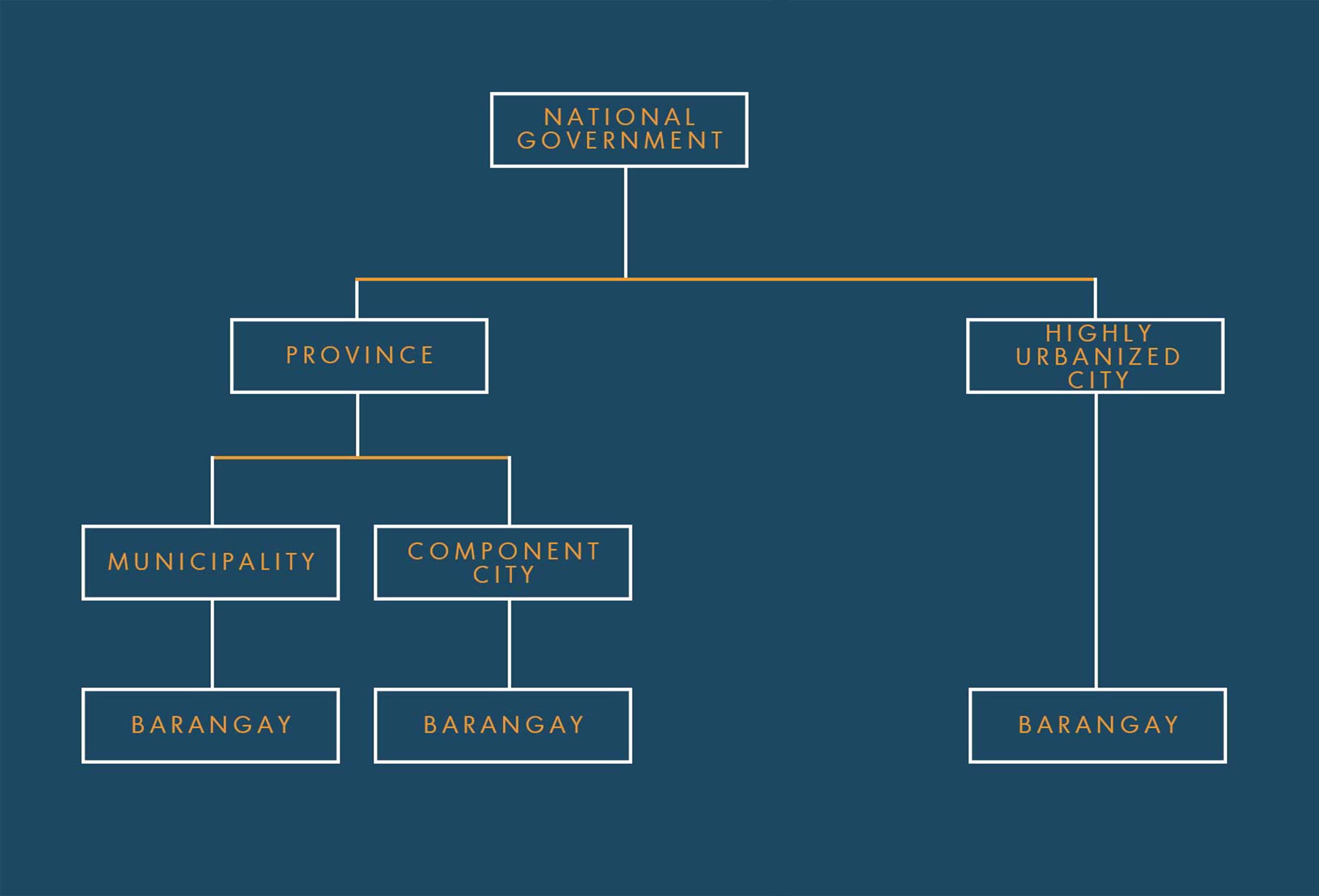Each local government level has an elected set of chief executive and members of a legislative body called sanggunian as well as a bureaucracy.
* With the exclusion of the Autonomous Region in Muslim Mindanao (ARMM) which transferred its powers to the new Bangsamoro Autonomous Region in Muslim Mindanao (BARMM) as instituted by the recent ratification of the Bangsamoro Organic Law (BOL).
Conceptualized by: Dr. Maria Ela Atienza (Professor and Chair), Asst. Prof. Jan Robert Go (Assistant Professor), and Herby Jireh Esmeralda (Research Assistant)
SOURCE
Atienza, Maria Ela. “Local Governments and Devolution in the Philippines.” In Philippine Politics and Governance, edited by Noel Morada and Teresa Encarnacion Tadem, 429-430. Quezon City: Department of Political Science, University of the Philippines Diliman, 2006.




